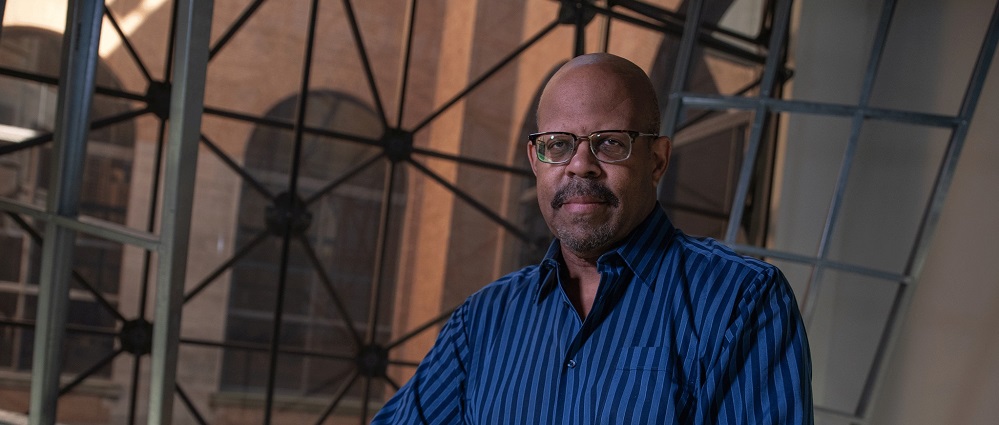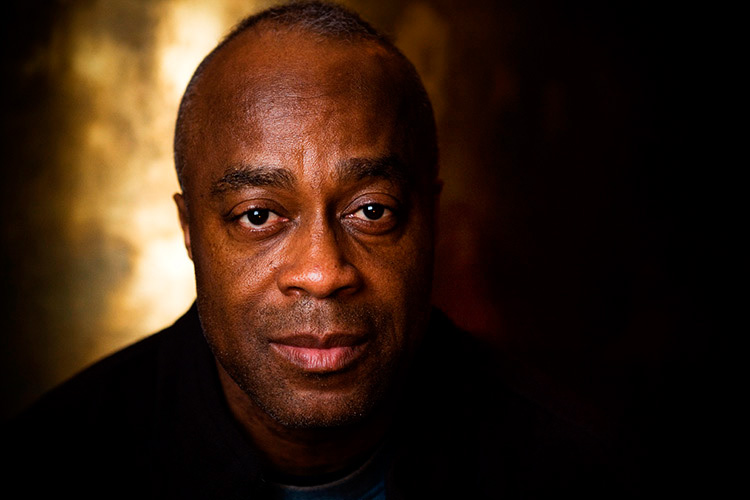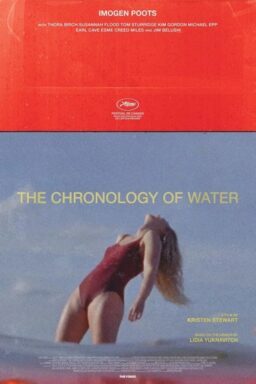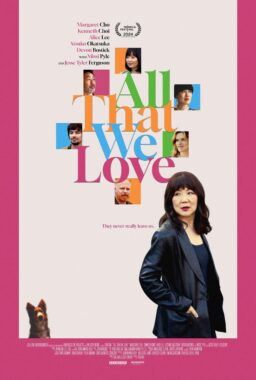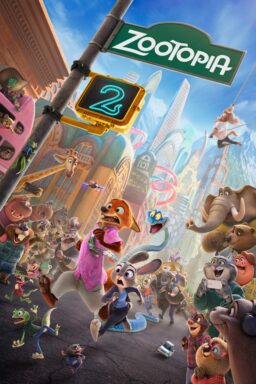Film director Charles Burnett is one of the true great humanist directors of cinema. Once called by The New York Times “the nation’s least known great filmmaker,” Burnett, originally from Vicksburg, Mississippi but raised (and still lives) in Los Angeles, first became known as one of the outstanding members of the group of UCLA Film School black filmmakers in the 1970’s known as the LA Rebellion. His name is included with prominent talents like the late Jamaa Fanaka (Penitentiary film series), Julie Dash (“Daughters of the Dust”) and Halie Gerima (“Sankofa”).
Among his many accolades and awards are the MacArthur Foundation Fellowship in 1988. Since 1969, he has made a wide range of films, including shorts, documentaries, feature films and television films that are not only compelling and profound. They are films that examine African-American life and culture with an expressiveness, intelligence and loving detail that transcends far beyond the usual stereotypes and tropes used to create full-rounded human beings.
Among his over 20 films including “My Brother’s Wedding,” “The Glass Shield” and television films such as “Nightjohn,” “Relative Stranger,” “Selma, Lord, Selma” and the ABC two part mini-series “The Wedding.” His first film, “Killer of Sheep,” which he made as his filmmaking master’s thesis at UCLA, is a powerful and wrenching docu-drama about the struggles of a meat slaughterhouse worker, Stan, to survive in the unforgiving urban landscape, and provide for his family. The film was among the first 50 films to be selected for National Film Registry of the Library of Congress for its historical importance in 1990.
Another notable title from his filmography is the 1990 drama “To Sleep with Anger,” starring Danny Glover, Paul Butler, Mary Alice, Richard Brooks, Carl Lumbly, Vonetta McGee and Sheryl Lee Ralph. The premise of the film concerns a loving older couple (Butler and Alice) with two grown sons and daughter-in-laws, who get an unexpected visit from the mysterious Harry (Glover)—a sort-of drifter and old friend from down South. They haven’t seen him in years, but he’s invited to stay with them for a few days.
However, it’s slowly revealed that Harry is not the friendly, likeable guy that he originally seems to be. It turns out that he’s a somewhat evil, malicious spirit whose very presence begins to negatively affect not only the family, but everyone else who comes into contact with him. The thing about “To Sleep with Anger” is that it’s hard to categorize what it is exactly about. On the surface, it looks like a simple family drama. But actually, it’s a sardonic domestic drama with elements of suspense, and a touch of the supernatural. The film may have Danny Glover’s greatest performance on film and, as with all of Burnett’s best work, what seems simple on the screen is actually rich with meaning.
When the film was first released, it was little seen by audiences, thanks to indifferent distribution and poor publicity. But it has grown its stature over the past 25 years, and a new, restored print by Sony Pictures premiered at the Venice Film Festival in August to rapturous acclaim. This month, the same print was screened at the Chicago International Film Festival, where Burnett also was awarded with the festival’s prestigious Career Achievement Award for his contributions to cinema.
While Charles was in town for the festival, we had an opportunity to talk to him about why “To Sleep with Anger” has endured for so long, his reflections on the film business, his plans for the future and more.
I’ve always been meaning to ask you—where does the title “To Sleep with Anger” come from?
It’s a paraphrase from the Bible, but I never got it quite right. I was talking to someone, and we were talking about the Bible, and he was very religious. So, I think it came from me from speaking with him. In fact, someone gave the exact place where it was, and I meant to write it down and I’ve never been able to find it since.
Watching the film again, I’m always reminded how much I can relate to it, and how it reflects incidents in my life. For example, like that scene when these old friends of Harry and the couple show up, and spend the night partying and drinking corn liquor. When I was kid, I remember some strange relative of my father who showed up that I had never met before, and before I knew it, all these other strange, disreputable people I had never seen before showed up, and they spent the evening talking, laughing and drinking rock and rye. There is this commonality among black families, and many other families as well, regardless of class or ethnicity, that you capture so well in “To Sleep with Anger”—those memories, images, sounds, smells, beliefs and superstitions.
These common themes are also structures within families. But what is common is how many things we know—and don’t appreciate—that are rooted in Africa. There was this song we used to sing when we were kids, though the words never made any sense to me. There was this actor Jester Hairston who people remember from that sitcom “Amen” and even “Amos and Andy,” and a bunch of movies. Well, he was also a musicologist. Years ago, I met Hairston and didn’t know he had this background. So I told him there was this song that I used to sing when I was a kid, but I never could figure out the lyrics, and I sang it to him. He said, “Oh, that came directly from Africa!” I mean we were singing these songs, and didn’t even know they were from Africa! That shows the influences that you are even unconscious of.

“To Sleep with Anger” still plays today with an audience. It’s a genuine audience movie, and everyone can find something in it to relate to. I’m glad that after 26 years it looks like it may finally find its audience at last. But when it first came out in 1989, it not was seen by most people; it wasn’t distributed well it all.
It was a lack of publicity, in a limited number of theaters. It only opened in 17 theaters nationwide. They didn’t do their job.
But now, theatrical distribution is not the only thing anybody is relying on. There are other venues such as Video On Demand. Which reminds me of something you said last night after the screening of “To Sleep with Anger” at the Chicago International Film Festival, that this new digital technology is making filmmaking more democratic by allowing anyone to be able to make movies. But also lot of stuff that’s coming out now is awful. Believe me I know, I program a film festival and you should see the dreck that gets made now because of all-digital technology.
Oh yes, I can. Everyone thinks they can make a film nowadays, or thinks that they don’t have to go to film school. When I was at UCLA’s film school, we wanted to jump right into the industry that didn’t exist. So you just stayed in school to make films, and worked and worked. UCLA finally had to kick me out. I mean, literally kicked me out. But a lot of the others did the same thing. We were always in some discussions about film; working on films. And remember back then it was only $25 to take a course at UCLA? It costs so much money now a student can’t afford to go there now. [Laughs] If [a student] gets in, by the time they’re out, they’ve got a $200,000 loan they’ve got to pay back. And USC you can forget about. Now the question is, “Is it worth going to film school?” But now, no matter how talented you are, that doesn’t mean anything. It’s a hit or miss kind of thing
There’s very much a nostalgic feel within “To Sleep with Anger.” It’s set in a place with a very strong sense of family and community, which was the norm back then, and now seems to have been lost everywhere.
Well, that’s one of things I tried to do with “To Sleep with Anger,” because I grew up in a rural sort of environment, but in the city that I missed. But I thought that was important for younger generations, even more so now. And because I grew up in a quasi farm-like situation with chickens, rabbits and turkeys in the backyard, and even saw baby chicks being hitched, I felt it was simply that you feel that people need to see that. They need to experience some kind of down-home, on-the-farm kind of experience. When I look at kids my today, I feel kind of sorry for them [laughs]. Part of that is my fault: trying to provide for them. But for a healthy generation, you need to somehow be connected to the soil.

You previously mentioned something that hadn’t dawned on me before that. “To Sleep with Anger” was your first film with professional actors. Before, with films such as “Killer of Sheep” and “My Brother’s Wedding,” you used non-pros who had never acted before. How did you handle the switch from non-pros to pros? How did you make that transition?
Well. not to pat myself on the back, but I learned pretty quickly [laughs]. I had to. I remember one day I was talking to Mary Alice and we were shooting a scene when she enters the kitchen and she asks me: “Where am I coming from?” And I’m thinking to myself, “What difference does it make?” [Laughs]. But she kept asking me, “Where am I coming from?” I didn’t understand what she was implying.
“What’s my motivation?”
Yes, exactly! Later on shortly after that, I began to realize what she meant as the first time working with established actors with talent. Before working with non-actors, it was just, “walk in through the door and go to the table and that is enough.” But working on “To Sleep with Anger,” I knew what I wanted, and I would sit back and let the actors work on behaviors, mannerisms and what it was like to live there.
There was room for a lot creative ideas from the actors. I remember that one scene, after one of the characters dies, the character played by Richard Brooks is explaining to his wife how sorry he is for his behavior, which had been terrible, and they wanted sort of a payback thing. So Richard and Sheryl Lee Ralph started thinking about how could we make him suffer, and the thing they came up with was her pulling hair off his chest and then apologizing for it. That was their contribution to things like that. When you have talent and then create an environment like that, you let the actor be “in the zone” or whatever it is and they come up with some really nice stuff.
Watching your films, I realized just how many directors, and just not African-American directors, have been inspired by you. I think of Ava DuVernay, whose early work such as “Middle of Nowhere” clearly shows your influence. But who inspired you? I can imagine it was the Italian neo-realist cinema of Vittorio de Sica or Roberto Rossellini for example.
It was everyone, including them. I love to watch those old black-and-white Hollywood films from the 1940s and 1950s because, for some reason, I appreciated them better. But one film that stood out for me was Jean Renoir’s Hollywood film “The Southerner. And directors like William Wellman. Those were really great films. I love the full-frame aperture, black-and-white compositions. The stories seem to be more relevant and more mature.

Which brings the obvious question. Why did you want to become a filmmaker in the first place?
Well, when I was in school I was working in a library in L.A., but I would have all this time when I had nothing to do so I would go to this movie theater called The Los Angeles which was on 6th and Broadway. I loved it because it was one of those old grand movie palaces. It was beautiful, and it always played these classics, like “For Whom the Bell Tolls” or “Spellbound.” I always wanted to do photography since I was in high school, but never got the chance to. So, I had this one friend who had a movie camera, and he let me shoot this airplane flying in the sky and it was a memorable experience, if you can imagine that strangely enough, and that was that.
So, coming out from junior high school, that whole place was just damaging to us as kids, and I wanted to comment on that. It was the first time I was really passionate about doing something. The school just destroyed the kids. But I put it on the back burner and I went to study electronics because I liked that, and eventually got a degree in that. But a lot of electronic engineers would come to class to take refresher courses to keep on new developments, and I would talk to these guys and I said to myself, “No, I can’t do this”. They were too dull [laughs]. I just had no interest in becoming who they were. So around this same time, I started taking creative writing classes, by this very interesting woman by the name is Isabel Ziegler, who was teaching in LA Community College. It was one of the best writing classes ever. I took it at least two or three times. It was such a great class.
And then I made a commitment to get into cinematography, so I tried to get into USC because it was closer. But, in order to get in, I had to pay for the first semester in order to get a grant to pay for it. But, of course, I needed a grant to get in in the first place. It was the cart before the horse. So I called up UCLA and they were like “Yeah, come on over.”
The rest is history as they say. But when you were at UCLA, which is so formative to you as a filmmaker as along with the whole LA Rebellion group of African American independent filmmakers there, which include Julie Dash, Ben Caldwell, Jamaa Fanaka and Halie Gerima—when did the idea of your first important film, “Killer of Sheep,” come about?
Well, they came along a little bit later after I was there, but I was there working with a diverse group of independent filmmakers. Many of them were politically-minded, making films about the working class and their exploitation. But their films had the same kind of structure, where the workers have been exploited, they form a union and everything goes happily after that. But I wasn’t coming from that sort of environment. I was coming from the situation where people needed a job and if you got a job, you just endured it. There was no solution. You just worked every day, got ripped off and maybe moved on to another job.
But we were aiming these films to try to say something about society, and how to make changes. And I found that their changes didn’t relate to anything similar to reality, at least not in my community. So, I wanted to make a film that represented that if you were living in my community, what you would see and experience. How best can we create a solution? It was almost a holistic kind of thing. It wasn’t just doing one thing, it was an onslaught of things that had to be dealt with—the school system, the working environment, you name it. And that’s what I wanted to do with “Killer of Sheep.” It’s complicated. It’s just not on one level. You have to attack it from all different levels. But I wanted to make it look real, like a documentary. I didn’t want to make it fancy with over-the-shoulder shots or anything like that. Just like, turn on the camera and capture what is there.
What’s next for you?
Well, there are several scripts that we’re working on, including one I want to do here in Chicago. But one I would really like to do is “Grieve for the Past,” based on book by the woman mystery writer Stanton Forbes. It’s a coming-of-age story about a teenager set in Kansas during the 1930’s. It involves the murder of a mother and her son in the house, which is behind the home where the main character lives.
